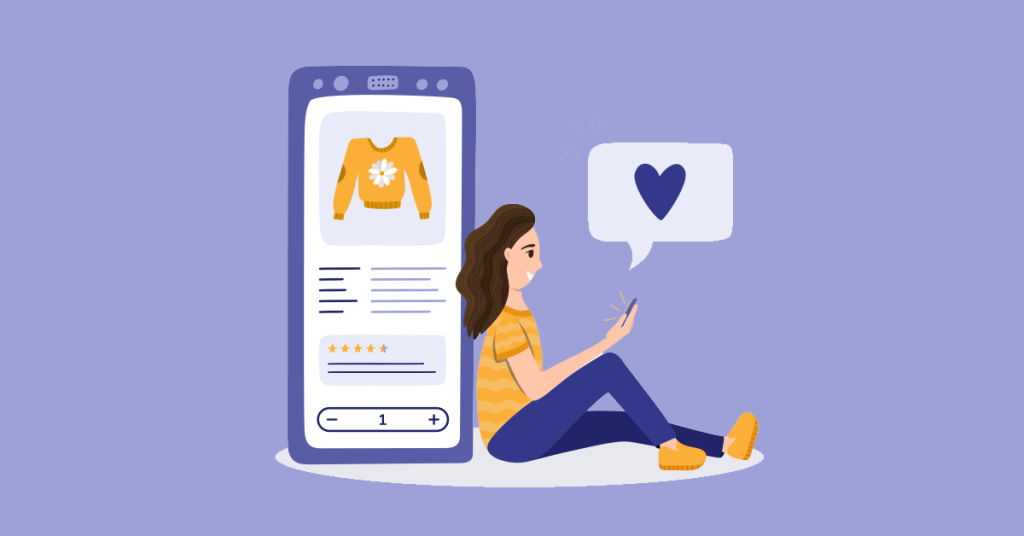Threads acquired 100 million users within five days of its launch by using Instagram as a growth surrogate.
That says more about Instagram’s dominance rather than Threads being a new-age X (formerly Twitter) alternative!
Over the years, Instagram has matured from an app where you posted your wanderlust pics to a platform that also offers companies a full-suite of sales features to build an ecommerce success story.
So, in this article, we explore these features, how you can gather customer insights right within Instagram, and scale your product sales.
But first, let’s get to know the:
Benefits Of Selling On Instagram
Large And Engaged Audience
Instagram is predicted to have 2.5 billion users by the end of 2023.
That makes it a goldmine of a platform for ecommerce businesses to tap into. This large audience includes diverse demographics and interests, providing a broad mix of potential customer base for your products.
Plus, Instagram users tend to be highly engaged, with an average user spending 24 minutes on the app every single day. This engagement gives you an open ground for you to connect with potential customers, and sell them the products they need and desire.
Visual Showcase
Instagram is a highly visual platform, which is perfect for showcasing your products. High-quality images and videos can effectively highlight the features, design, and benefits — basically, the USP of your products.
With the platform’s visually appealing format, you can create a strong brand identity and tell a compelling story around your products. This can help capture the attention of users who viciously skim and scroll, and differentiate your offerings from competitors.
Instagram Shopping
The platform offers in-app ecommerce features via Instagram Shopping, making the purchase process seamless for users. Businesses can tag products in their posts, stories, and even on their profile, allowing users to explore and purchase products with just a few taps.
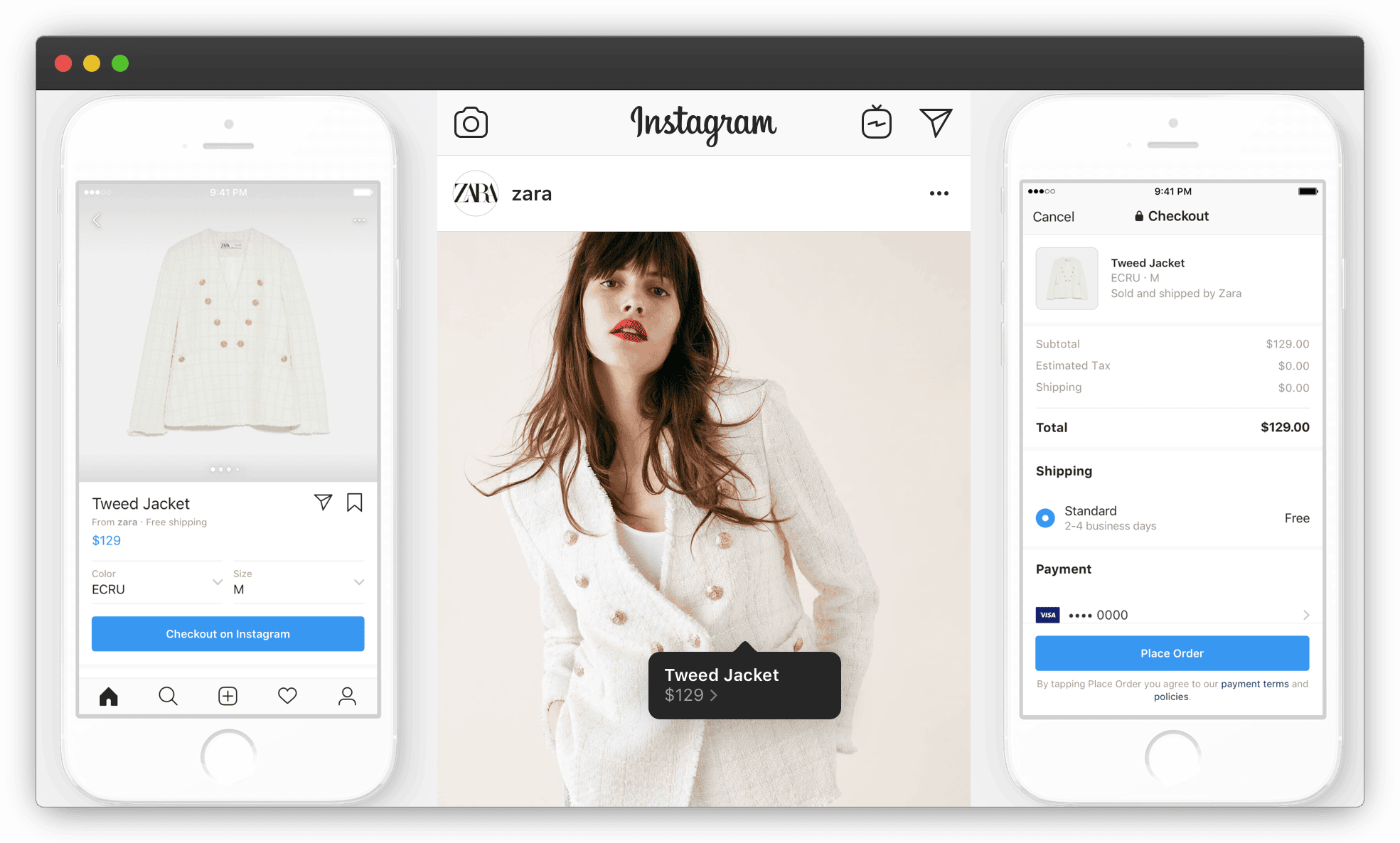
[Source]
This feature eliminates the friction between discovery and purchase, improving the overall customer’s buying experience.
User-Generated Content And Social Proof
Instagram encourages UGC, where customers share photos and reviews of your products. This acts as powerful social proof, influencing others to trust your brand and choose you over competitors.
Positive UGC can significantly boost your credibility and drive organic growth as satisfied customers become brand advocates. This, in turn, reduces your ad spend and CAC.
6 In-App Features That Help You Sell On Instagram
(Almost) every app dreams of being the super-app — much like WeChat. Look at what X has been trying to do lately.
Why? Because it creates a complete ecosystem that keeps users inside the app.
And Instagram recognized this, and introduced the following features that allow businesses to sell directly within the app and letting customers purchase their favorite products without needing to leave Instagram:
- Shoppable Posts: They’re regular Instagram posts that’ve been tagged with product tags — which include product names and prices. When users tap on a tag, they can see more details about the product and a link that takes them to the product page on your website, where they can make a purchase.
- Product Stickers in Stories: Work similarly to shoppable posts, allowing you to tag specific products within your Stories. Users can tap on the product sticker to view product details and make a purchase.
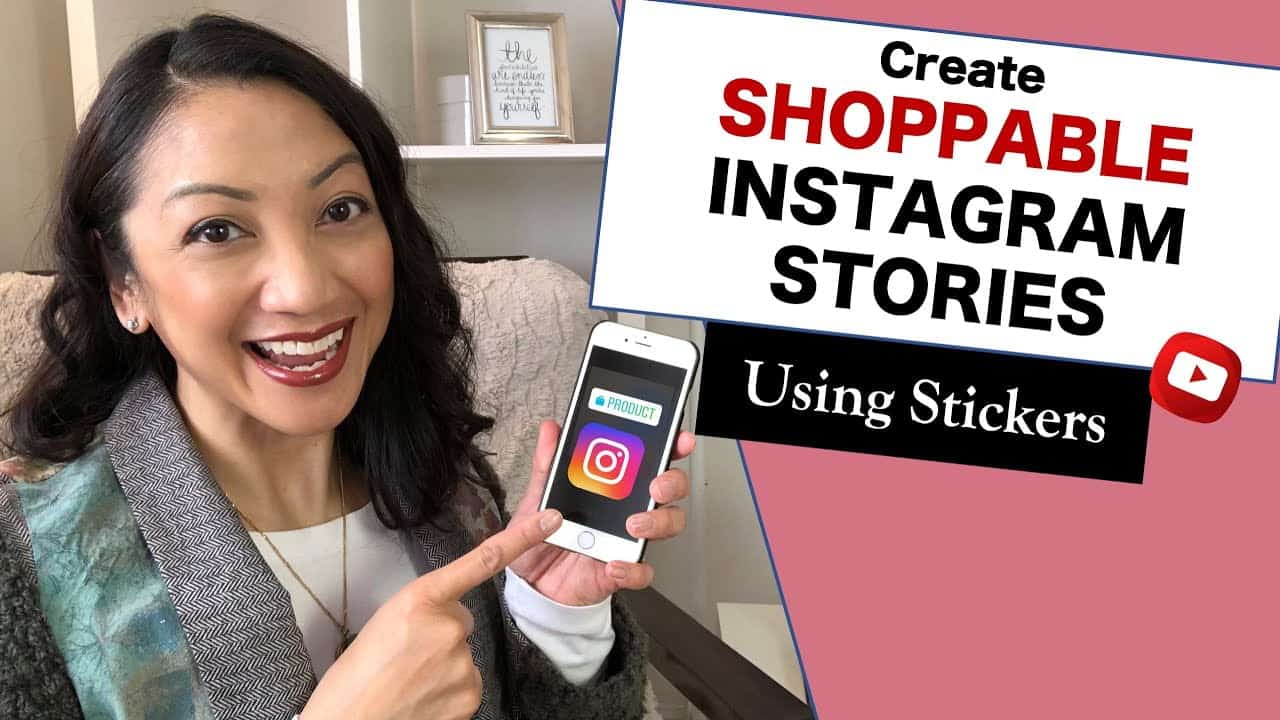
[Source]
- Product Collections: Useful for showcasing related items or promoting a specific product line. Users can browse through the collection and directly purchase the products they’re interested in.
- Checkout: The feature that allows users to complete the entire purchase process without leaving the app. But it’s currently only available for eligible US businesses. It streamlines the purchase process by enabling users to select a product, choose options (like size or color), and make the payment right within Instagram.
- Shop Tab: Displays a catalog of your products, making it easy for users to explore and browse your offerings without the need to scroll through your regular posts.
- Direct Messaging: Not exactly a selling feature, but to provide personalized assistance, share product information, and even facilitate transactions if necessary. This is key because providing real-time and top-notch customer support can get you an awesome word-of-mouth on Instagram, which can get you more sales.
How To Gather Customer Insights On Instagram
Before you can zero in on a product strategy to deploy on Instagram, you need an in-depth understanding of your target customers, as in:
- Who they are (demographics)
- What they want (preferences, pain-points, and purchase behavior)
- What motivates them (buyer motivations)
This data will prevent you from stocking up your inventory with just about any trendy product because even if it’s trendy, it might not be the right one for your brand.
And this is how you can gather this valuable data:
Instagram Insights
- Know Your Audience: Instagram Insights gives you important info about your followers — their age, gender, location, and when they’re most active. This helps you understand who’s following you, and you can deduce why they follow you.
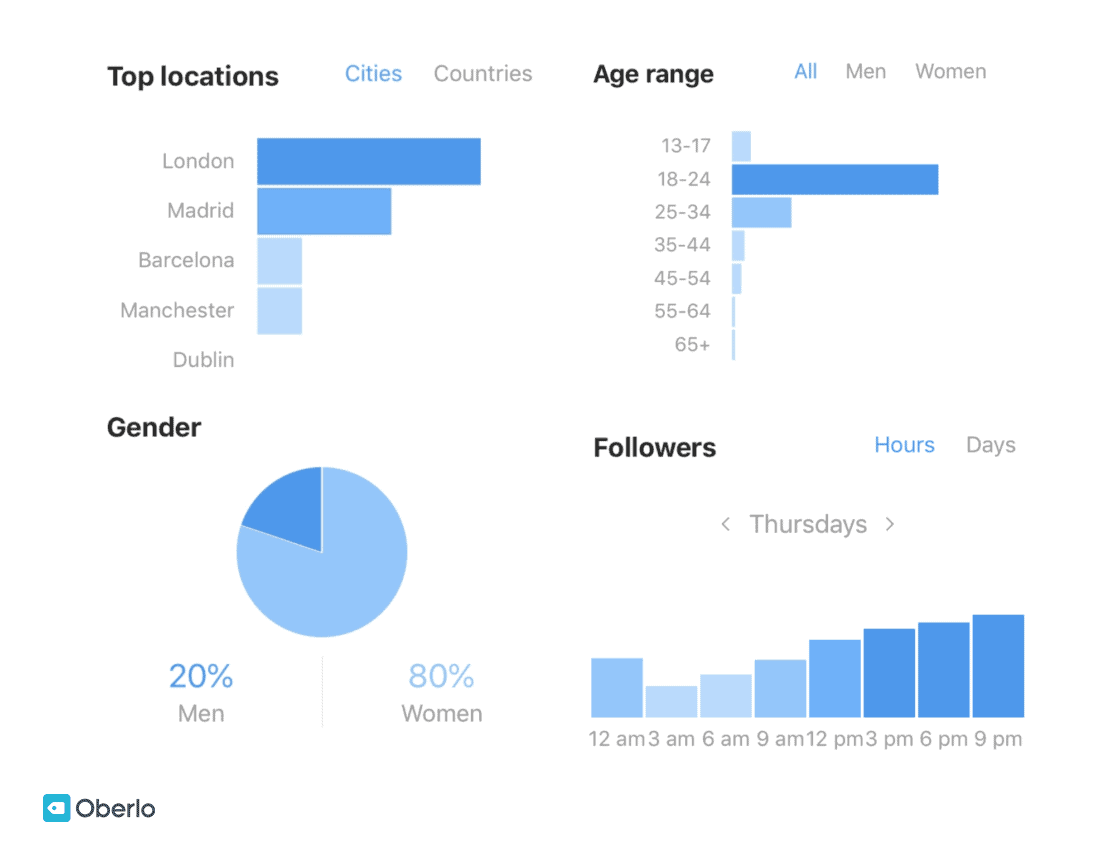
[Source]
- Check What Works: Figure out what type of content (like images, personalized videos, or carousel posts) gets you the most likes, comments, shares, and bookmarks.
Competitor Analysis Right Within Instagram
- Spot The Leaders: Find competitors in your field with lots of followers and active engagement. Look closely at what they’re doing right and take notes.
- Engagement Check: Study the comments, likes, and shares on their posts. This shows what their audience likes and is interested in, which can give you ideas about your own content strategy.
- Stay Trendy: Observe what’s popular in your industry currently by seeing which types of content get attention from their followers, and rolling your ball with it.
Hashtag Research on Instagram
- Find The Right Tags: Search for hashtags that fit your industry. Check how much engagement posts with these hashtags get. This tells you what topics your audience is currently into.
- Make Your Own Branded Hashtag: Create a special hashtag just for your business. Keep an eye on how people use it and see how far it reaches. Branded hashtags can help you build a community and leverage UGC.
Surveys (And Other Interactive Features)
- Ask In Stories: Use Instagram Stories’ polls and questions to ask your audience directly. Learn what they like and what issues they face.
- Run Surveys: Put surveys in your Instagram bio or Stories. Ask about product preferences, challenges, or how customers feel about your brand. Offer them incentives, such as giveaways or discounts, to encourage participation and make it worth their time.
Collaborate With Instagram Influencers
- Know Their Audience: When teaming up with influencers, learn about their followers — who they are and how engaged they are. This gives you a glimpse into a potential part of your target audience.
- Check Influencer Content: Study the posts influencers make for your brand. Look at how their followers react, like shares and tagging their friends in comments. This shows how their audience responds to your products and interesting discount offerings.
Finding the email address of the influencer is quite straightforward. Most influencers include their email and other contact details right in their bio. For others, there are tools that can help you find their email address from LinkedIn or from other business platforms.
Plan a direct outreach strategy to reach out to these influencers, and work on a campaign that will derive the maximum ROI for your marketing spend.
How To Validate Product Success On Instagram With Marketing Assets
Testing product ideas and validating their demand and profitability potential on Instagram requires you to create a buzz around your products(s), engaging your target audience, and gathering enough actionable feedback that can help you improve on them, if you find they aren’t up to the mark.
While you may have dozens of marketing ideas to experiment with, it is important to narrow down your strategies, and stick with them till you see them through. This is critical as a lot of marketing success is not overnight, and instead comes from persistent action.
And remember, you’d need to adopt the trial-and-error method of testing out which product ends up in your Goldilocks zone: a combo of enough demand, steady vendor supply, healthy margins to help you build and scale, and inclines towards being an evergreen product instead of just a fad.
In short, if it is not a strategy that would go in your Instagram marketing pitch deck for your shareholders, do not invest resources in it.
A few ways to do so:
Pre-Launch Campaigns
- Create a series of teaser posts counting down to the product launch. You can start the campaign about a week before the product launch, and upload one teaser post each of those days. Use eye-catchy visuals and interest-building captions. Encourage your followers to turn on post notifications, so they don’t miss the big reveal.
- Share sneak peeks of the product in action or highlight specific features. This gives followers a taste of what’s to come.
- Create a microsite and share it within the caption or bio. Services like Webflow can help you create such microsites in minutes, and this is very valuable for product validation.
Giveaways
- Host a giveaway where participants have a chance to win your new product. Require them to follow your account, like the giveaway post, and tag friends in the comments. This not only increases engagement but also spreads the word about your product.
- Ask users to create content related to your product idea. It could be a design, a caption, or a short video. The most creative entry wins a prize, generating excitement and UGC.
For example, if you run an outdoor gear brand, and are about to release a new backpack, you can ask your followers to share their dream adventure destination, tagging your brand and using your branded hashtag. The best entry wins the upcoming backpack.
Influencer Marketing
- Partner with influencers who align with your product and target audience. Influencers can introduce your product to their engaged followers — which can increase the breadth of your product launch.
- Send your product to influencers for unboxing and review videos. These videos can showcase your product’s features and benefits, giving potential customers an honest review from a trusted source.
Feedback Loops
- After the product launch, actively ask customers for their opinions. Use polls, questions in Stories, or DM them to inquire about their experience, what they liked, and any areas for improvement.
- Keep an eye on reviews and comments. Address any issues promptly and express gratitude for positive feedback.
Use Paid Ads To Scale Your Instagram Success
You can choose to safely land the initial product sales organically on Instagram, but you can achieve the required economical scale only via paid ads.
That’s simply because you need to pump in money to reach a big enough audience as the app doesn’t offer organic reach significant enough to scale an ecommerce business.
Plus, most importantly, as you grow, you need to continually optimize your CAC and conversion rates, because otherwise this growth will eat up your margins.
And you don’t want to be a business whose paid ads strategy gets them only to a break-even at best, period.
Here’s how you can use paid ads wisely to scale your Instagram success:
Instagram Ads
- Use Instagram’s robust ad platform to create highly-targeted campaigns. Define your audience based on demographics, interests, behaviors, and previous engagement with your brand.
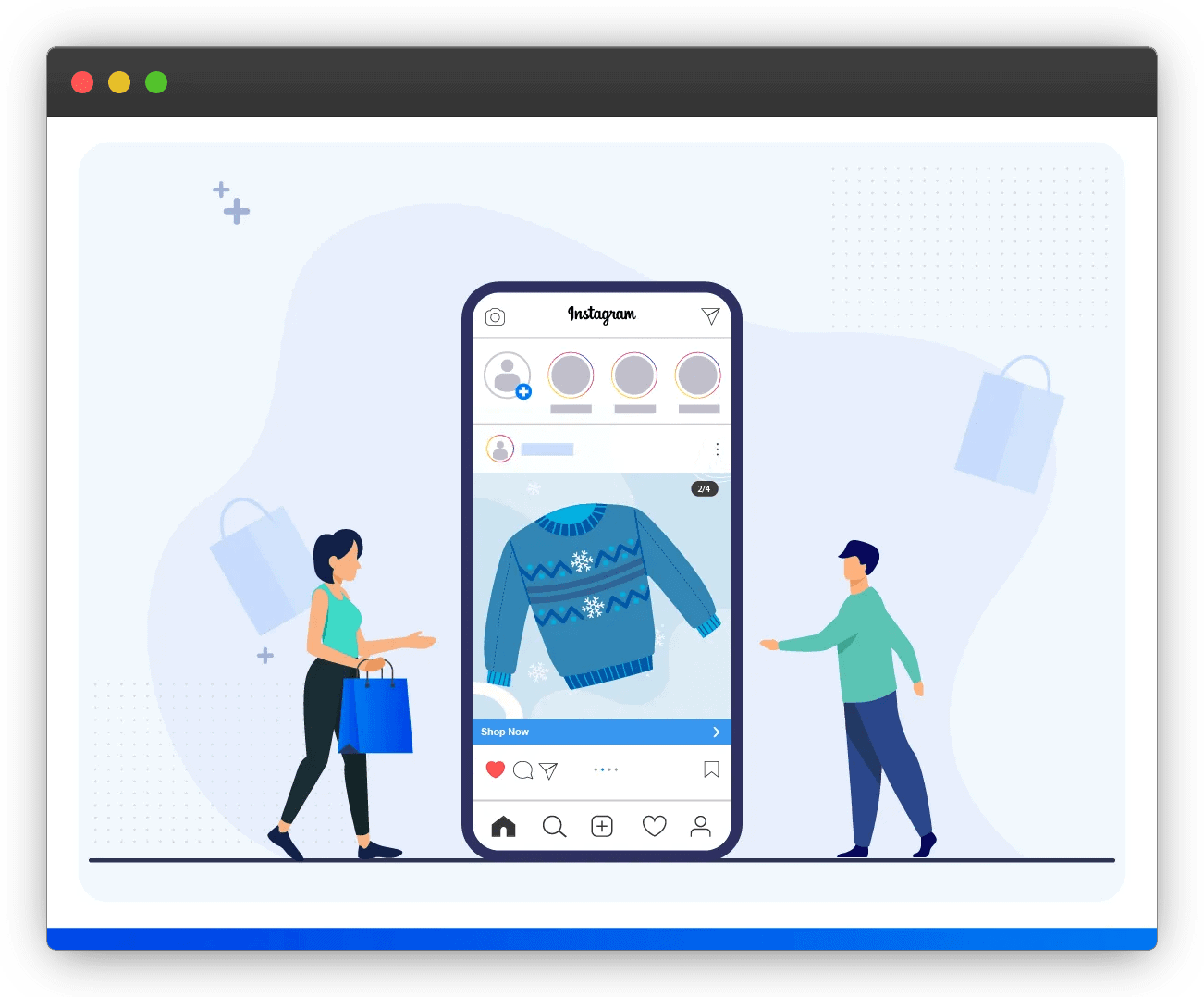
[Source]
- Opt for ad objectives that emphasize conversions. Whether it’s directing them to visit your website, make a product purchase, or sign up for early access to the product launch, focus on measurable outcomes that align with your campaign goals.
- Experiment with different ad formats, images, copy, and CTAs to discover what resonates best with your target audience.
- If you also own a brick-and-mortar store in addition to an online shop or have a specific launch event location, leverage geo-targeting to reach users in a specific geographic area.For example, you can promote a product launch to local users and create a buzz within your target location.
Retargeting
- Set up retargeting ads specifically aimed at individuals who have visited your website or interacted with your Instagram content but haven’t yet taken the desired action. These ads act as gentle reminders and bring back potential customers who might need a little nudge to convert.
- Segment your retargeting audience based on specific actions they took on your website or Instagram profile.For example, create separate retargeting ads for users who abandoned their shopping carts vs. those who viewed certain product pages.
- Implement frequency capping to ensure that users see your ads at a reasonable rate, preventing ad fatigue while maintaining a presence in their feed.
- Expand retargeting to the Google Publisher network. This is the network of independent blogs and websites that monetize via Google Adsense. They are a highly cost-effective means to reach your audience through highly-targeted ads.
Email Marketing
- Divide your email list into segments based on various factors, such as user behavior (like website visits, previous purchases), preferences, demographics, or engagement level, so you could create segment-specific emails.
- When a user adds products to their cart but doesn’t complete the purchase, send them a well-timed reminder email. Adding an incentive — like a discount or free shipping — can be particularly effective in recovering abandoned carts.
- Reward your email subscribers with exclusive offers or early access to the product launch. This is an effective email marketing strategy to not only makes them feel special but also incentivizes them to take action.
Loyalty Programs
- Reward repeat customers not only for purchases but also for other valuable actions like referrals and social media engagement. Offer a tiered system where customers can unlock better rewards as they progress — fueling ongoing engagement.
- Provide loyalty program members with exclusive discounts or special pricing on products. This makes them feel valued and encourages them to keep coming back to your brand for their future purchases.
- Implement a points-based system where customers earn points for each purchase or action. These points can then be redeemed for discounts or free products, adding a gamified element to the loyalty program.
Final Words on What Products To Sell On Instagram
Our last piece of advice would be to stop chasing vanity metrics like the number of followers, just for the heck of it, but instead question if getting more followers would help you get more sales.
If you prioritize building a community around your brand, your ad spend and CAC would go down automatically because you no longer would have to keep pumping in dollars to get every single sale.
So, understand your target customers well by going deep with the insights, and utilize all the tools and features we mentioned above to hit your sales goals.
